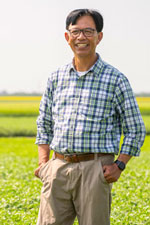Dr. Bunyamin Tar'an (PhD)

Professor
Ministry of Agriculture Strategic Research Program (SRP) Chair in Chickpea and Flax Breeding and Genetics

Professor
Ministry of Agriculture Strategic Research Program (SRP) Chair in Chickpea and Flax Breeding and Genetics